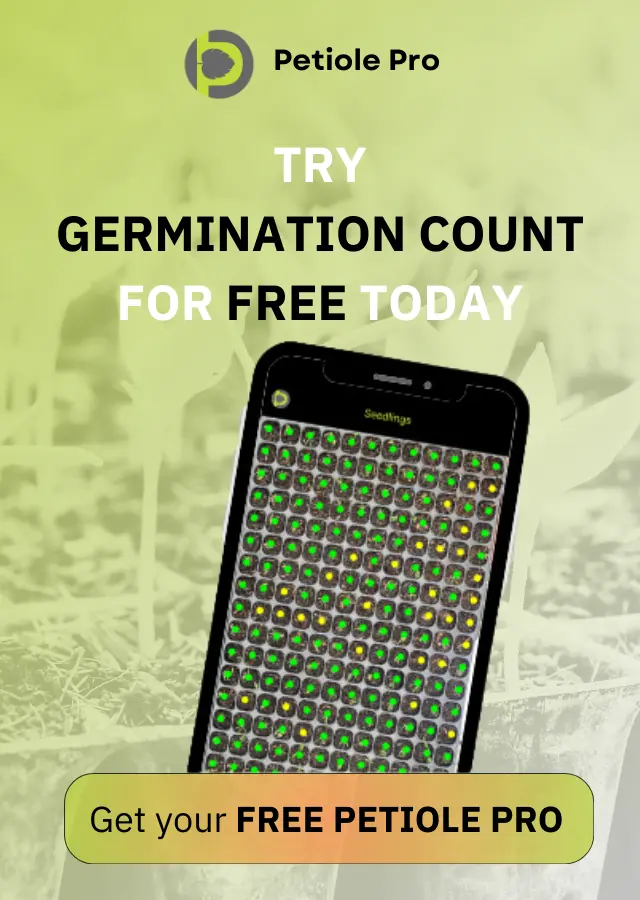AI Innovations Transforming Grapes, Blueberries, and Kiwi Wine Production


What is wine production?
Wine production is the process of turning fruit into wine, which involves fermentation, aging, and bottling.
Traditionally, wine is made from grapes, which are ideal due to their high sugar content, balanced acidity, and rich flavors that develop through fermentation.
However, other fruits like blueberries and kiwis are also becoming popular in winemaking. Blueberries bring a deep, rich color and antioxidant properties, while kiwis add a unique, tangy flavor and vibrant aroma.
These fruits, with their distinctive qualities, offer new and exciting possibilities in the world of wine production, expanding the variety of flavors and experiences available to wine enthusiasts.
Main Challenges in Winemaking
In winemaking, each fruit presents its own unique challenge:
-
The main challenge for grape winemaking is managing climate sensitivity. Grapes are highly dependent on specific growing conditions, and variations in weather can significantly affect their quality and yield, leading to inconsistency in wine production.
-
Low sugar content is a challenge for blueberry wines. Unlike grapes, blueberries have less natural sugar, which can result in a lower alcohol content and requires careful management of the fermentation process to achieve the desired balance.
-
The high acidity of kiwis poses a challenge in winemaking. This can make the wine too tart if not properly balanced, requiring precise adjustments during fermentation to ensure a pleasant taste.
Recent Advances in E-Nose Technologies for the Wine Industry
Country: Italy 🇮🇹
Published: 4 April 2024
This review explores the current advancements in electronic nose (E-nose) technologies and their applications in the wine industry, focusing on how these devices can replicate human olfactory functions to assess wine quality and detect defects.
The study systematically reviewed literature from 2015 to 2024, focusing on the application of E-nose technologies in wine analysis.The main techniques discussed include the use of metal oxide semiconductors (MOS), conducting polymers (CP), and quartz crystal microbalance (QMB) sensors. These were combined with machine learning algorithms like Support Vector Machines (SVM), Artificial Neural Networks (ANN), and clustering methods for data analysis and interpretation. The study highlights the integration of E-nose systems with traditional techniques like gas chromatography-mass spectrometry (GC-MS) for comprehensive wine aroma profiling.
 Main applications of the electronic nose in the oenological sector (wine aging, wine defects, wine and grape quality). Source: Alfieri et al., 2024
Main applications of the electronic nose in the oenological sector (wine aging, wine defects, wine and grape quality). Source: Alfieri et al., 2024
 Main applications of the electronic nose in the oenological sector (wine and grape quality, winemaking techniques). Source: Alfieri et al., 2024
Main applications of the electronic nose in the oenological sector (wine and grape quality, winemaking techniques). Source: Alfieri et al., 2024
 Main applications of the electronic nose in the oenological sector (winemaking techniques, wine and grape identification, wine characterization). Source: Alfieri et al., 2024
Main applications of the electronic nose in the oenological sector (winemaking techniques, wine and grape identification, wine characterization). Source: Alfieri et al., 2024
 Main applications of the electronic nose in the oenological sector (wine characterization). Source: Alfieri et al., 2024
Main applications of the electronic nose in the oenological sector (wine characterization). Source: Alfieri et al., 2024
Key findings emphasize the growing effectiveness of E-nose systems in detecting wine aromas, geographical origins, and defects such as smoke taint, with precision comparable to human sensory panels.
One interesting fact from the study is that E-noses equipped with Metal Oxide Semiconductor (MOS) sensors have been effectively used to detect specific wine defects like smoke taint, which is caused by volatile phenols absorbed by grapes exposed to smoke from wildfires. This technology, combined with machine learning algorithms, offers a rapid, cost-effective alternative to traditional methods like gas chromatography for identifying smoke-tainted wines, which can significantly impact the wine’s quality and marketability.
The study reports that E-nose systems, coupled with machine learning, can provide rapid, cost-effective, and non-destructive alternatives to traditional sensory analysis.
 Exposure of grapes to fire or contamination by Brettanomyces in grapes and wines can lead to the development of certain defects related to certain volatile phenols. Alfieri et al., 2024
Exposure of grapes to fire or contamination by Brettanomyces in grapes and wines can lead to the development of certain defects related to certain volatile phenols. Alfieri et al., 2024
The results of this research are particularly applicable to winemakers, researchers, and quality control professionals in the wine industry who seek to enhance quality assessment processes using advanced sensor technology.
 Main applications of the electronic nose for smoke taint detection. Source: Alfieri et al., 2024
Main applications of the electronic nose for smoke taint detection. Source: Alfieri et al., 2024
Technologies and Tools Used:
-
Hardware: Metal Oxide Semiconductor (MOS) sensors, Conducting Polymer (CP) sensors, Quartz Crystal Microbalance (QMB) sensors
-
Software/Techniques: Machine learning algorithms (SVM, ANN), Principal Component Analysis (PCA), Gas Chromatography-Mass Spectrometry (GC-MS)
Main tools and technologies discussed:
-
Metal Oxide Semiconductor (MOS) sensors
-
Conducting Polymer (CP) sensors
-
Quartz Crystal Microbalance (QMB) sensors
-
Machine Learning (SVM, ANN)
-
Gas Chromatography-Mass Spectrometry (GC-MS)
 A wireless and portable electronic nose to differentiate musts of different ripeness levels and grape varieties. Source: Aleixandre et al., 2015
A wireless and portable electronic nose to differentiate musts of different ripeness levels and grape varieties. Source: Aleixandre et al., 2015
More details on this research can be found using the reference: Alfieri et al., 2024
Enhancing Blueberry Wine Aroma: Insights from Cultivar Selection and Berry Sorting
Country: China 🇨🇳
Published: 19 November 2023
This study investigates how selecting specific blueberry cultivars and implementing precise berry sorting can enhance the aroma quality of blueberry wine, with a focus on identifying the volatile compounds responsible for the distinctive aromas.
The research employed gas chromatography-mass spectrometry (GC-MS) to analyze the volatile profiles of blueberry wines made from nine cultivars. Additionally, berries from two cultivars were categorized by size to assess the impact on wine aroma. The study utilized principal component analysis (PCA) and principal component regression (PCR) analysis to correlate sensory attributes with volatile compounds.
 The physiochemical compositions of blueberry juices from different cultivars. Source: Wang et al., 2023
The physiochemical compositions of blueberry juices from different cultivars. Source: Wang et al., 2023
 *The physiochemical compositions of blueberry wines from different cultivars. Source: Wang et al., 2023
*The physiochemical compositions of blueberry wines from different cultivars. Source: Wang et al., 2023
In the tables above: (a) Different letters in the same row means significant differences on the basis of Duncan’s multiple range test at p < 0.05. (b) TSS, total soluble solids. (c) YAN, yeast assimilable nitrogen.
To compare all the varieties, including Baldwin, Brightwell, Emerald, Legacy, Misty, Jewel, O’Neal, Star, and V3, you’ll need to refer directly to the research paper.
Key findings indicate that cultivar selection significantly impacts the aromatic profile of blueberry wines, with ‘Misty’ and ‘V3’ cultivars showing higher concentrations of floral and fruity aromas, attributed to elevated levels of terpenoids and esters. Smaller berries from the ‘Misty’ cultivar significantly enhanced the aroma, particularly increasing the content of higher alcohols, esters, and terpenoids, while berry size had little effect on the ‘Star’ cultivar.
 The concept of enhancing blueberry wine aroma. Source: Wang et al., 2023
The concept of enhancing blueberry wine aroma. Source: Wang et al., 2023
 The concentrations of total alcohols (A), esters (B), acids (C) and terpenoids (D) in blueberry wines from nine cultivars. Different letters in each plot indicate the significant differences between cultivars based on Duncan’s test at p < 0.05. Source: Wang et al., 2023
The concentrations of total alcohols (A), esters (B), acids (C) and terpenoids (D) in blueberry wines from nine cultivars. Different letters in each plot indicate the significant differences between cultivars based on Duncan’s test at p < 0.05. Source: Wang et al., 2023
 * The correlations between volatile compounds and physiochemical compositions in blueberry wines from nine cultivars. Source: Wang et al., 2023*
* The correlations between volatile compounds and physiochemical compositions in blueberry wines from nine cultivars. Source: Wang et al., 2023*
For the image above - blue and red colors in the lower triangle heatmap indicate the negative and positive correlations between volatile compounds. Line width and color indicate the r and p value of Mantel correlations between physiochemical compositions and volatile compounds, respectively. YAN means yeast assimilable nitrogen.
 Heatmap analysis based on the concentrations of the volatile compounds with relative odor activity values (rOAVs) higher than 0.1 in blueberry wines from nine cultivars. Source: Wang et al., 2023
Heatmap analysis based on the concentrations of the volatile compounds with relative odor activity values (rOAVs) higher than 0.1 in blueberry wines from nine cultivars. Source: Wang et al., 2023
These findings can be practically applied by winemakers and researchers aiming to optimize blueberry wine aroma through cultivar selection and precise berry sorting.
 The principal component regression analysis (PCR) based on the concentrations of the volatile compounds and the scores of aroma attributes in blueberry wines from nine cultivars. Source: Wang et al., 2023
The principal component regression analysis (PCR) based on the concentrations of the volatile compounds and the scores of aroma attributes in blueberry wines from nine cultivars. Source: Wang et al., 2023
 The biplots with PC1 and PC2 (A) as well as PC1 and PC3 (B) of principal component analysis (PCA) based on the volatile compounds with relative odor activity values (rOAVs) higher than 0.1 in blueberry wines from different fruit size categories. Source: Wang et al., 2023
The biplots with PC1 and PC2 (A) as well as PC1 and PC3 (B) of principal component analysis (PCA) based on the volatile compounds with relative odor activity values (rOAVs) higher than 0.1 in blueberry wines from different fruit size categories. Source: Wang et al., 2023
Technologies and Tools Used:
- Hardware: Gas chromatography-mass spectrometry (GC-MS)
- Software/Techniques: Principal component analysis (PCA), Principal component regression (PCR)
More details on this research can be found using the reference: Wang et al., 2023
 Examples of blueberry wines available for the customers in the United Kingdom. Source: google.com, request - blueberry wine buy
Examples of blueberry wines available for the customers in the United Kingdom. Source: google.com, request - blueberry wine buy
Impact of Must Clarification on Kiwifruit Wine Quality
Country: China 🇨🇳
Published: 19 August 2024
This study examines how different must clarification treatments affect the chemical composition, volatile compounds, and sensory attributes of kiwifruit wines made from five different kiwifruit varieties.
The methods used in this research included the preparation of kiwifruit musts with varying levels of clarification (100 NTU, 200 NTU, 300 NTU, muddy juice, and pulp), followed by fermentation using Saccharomyces cerevisiae. The study utilized gas chromatography-mass spectrometry (GC-MS) for the analysis of volatile compounds, high-performance liquid chromatography (HPLC) for basic physicochemical parameters, and quantitative descriptive analysis (QDA) for sensory evaluation.
 Cluster heat map of volatile compounds. Source: Huang et al., 2024
The columns of labels with capital letters represent the kiwi wines fermented from different kiwi varieties (YT Yate, HY Huayou, HWD Haywad, QM Qinmei, XX Xuxiang). Different lowercase letters on the values indicate significant differences between different treatment groups at p < 0.05.
Cluster heat map of volatile compounds. Source: Huang et al., 2024
The columns of labels with capital letters represent the kiwi wines fermented from different kiwi varieties (YT Yate, HY Huayou, HWD Haywad, QM Qinmei, XX Xuxiang). Different lowercase letters on the values indicate significant differences between different treatment groups at p < 0.05.
In this study, Principal Component Analysis (PCA) was employed as a statistical tool to reduce the complexity of the data by transforming a large set of variables into a smaller set of uncorrelated components, which retain most of the original data’s variance. This approach was used to analyze and visualize the impact of different must clarification levels on the aroma profiles of kiwifruit wines, allowing the researchers to identify key differences in volatile compounds across various treatments and kiwifruit varieties. PCA is a common technique within the field of AI, specifically used for dimensionality reduction, which helps in simplifying complex datasets by reducing the number of variables while preserving essential patterns and relationships. This makes it easier to interpret and visualize high-dimensional data, such as the complex chemical profiles of wines in this study.
Key findings revealed that clarification significantly influenced the sensory quality of kiwifruit wines. Wines made from clarified juice had higher ester content, contributing to more desirable fruity and floral aromas, whereas wines from muddy juice and pulp contained higher levels of alcohols, leading to less favorable grassy flavors. Notably, wines made from 100 NTU juice exhibited better freshness and intensity in sensory evaluations. The study also identified ‘Xuxiang’ as the most suitable kiwifruit variety for high-quality wine production.
 Principal component analysis (PCA) of aroma compounds. Source: Huang et al., 2024
Principal component analysis (PCA) of aroma compounds. Source: Huang et al., 2024
In the figure above: (A) PCA of the aroma compounds with OAV > 1 of five kiwifruit wines; (B) Third principal component analysis of aroma compounds with OAV > 1 in “Hayou”, “Haywad”, and “Yate”.
 QDA of kiwi wines fermented with different clarifications of kiwifruit juice. Source: Huang et al., 2024
In the figure above - the different bold letters represent kiwifruit wines fermented from different kiwifruit varieties (A/a Xuxiang, B/b Huayou, C/c Haywad, D/d Qinmei, E/e Yate).
QDA of kiwi wines fermented with different clarifications of kiwifruit juice. Source: Huang et al., 2024
In the figure above - the different bold letters represent kiwifruit wines fermented from different kiwifruit varieties (A/a Xuxiang, B/b Huayou, C/c Haywad, D/d Qinmei, E/e Yate).
These findings can be practically applied by winemakers looking to optimize the aroma and sensory qualities of kiwifruit wines through controlled clarification processes.
Technologies and Tools Used:
- Hardware: Gas chromatography-mass spectrometry (GC-MS), High-performance liquid chromatography (HPLC)
- Software/Techniques: Principal component analysis (PCA), Quantitative descriptive analysis (QDA)
Main tools and technologies discussed:
- Gas chromatography-mass spectrometry (GC-MS)
- High-performance liquid chromatography (HPLC)
- Principal component analysis (PCA)
- Quantitative descriptive analysis (QDA)
More details on this research can be found using the reference: Huang et al., 2024
Additional Reading for Kiwi Wine production
Characterization of different non-Saccharomyces yeasts via mono-fermentation to produce polyphenol-enriched and fragrant kiwi wine
This study aimed to enhance the functional properties and flavor quality of kiwi wine by evaluating 11 non-Saccharomyces yeast strains from five species. The research found that most non-Saccharomyces strains produced higher levels of polyphenols compared to Saccharomyces cerevisiae WLS21 (Sc21). Among the 130 volatile compounds identified in the kiwi wines, Zygosaccharomyces rouxii IFO30 (Zr30), Zygosaccharomyces bailii IFO37 (Zb37), and Schizosaccharomyces pombe 1757 (Sp57) produced higher concentrations of these compounds than Sc21.
Principal component analysis (PCA) showed that Zr30 and Zb37 specifically increased ethyl esters and other volatiles, while Sp57 enhanced phenylacetaldehyde and phenethyl acetate. Sensory analysis indicated that Zr30 and Zb37 were superior to Sc21 in aroma production, and partial least-squares regression (PLSR) analysis highlighted that aromas of tropical fruits, red fruits, dried fruits, and flowers positively influenced the overall acceptability of the kiwi wine.
Reference: Zhu, Y., Li, X., & Zhang, Q. (2021). Antioxidant activities and anthocyanin profiles of red kiwi fruit wine during fermentation and storage. Journal of Food Composition and Analysis, 101, 103971. https://doi.org/10.1016/j.jfca.2021.103971

